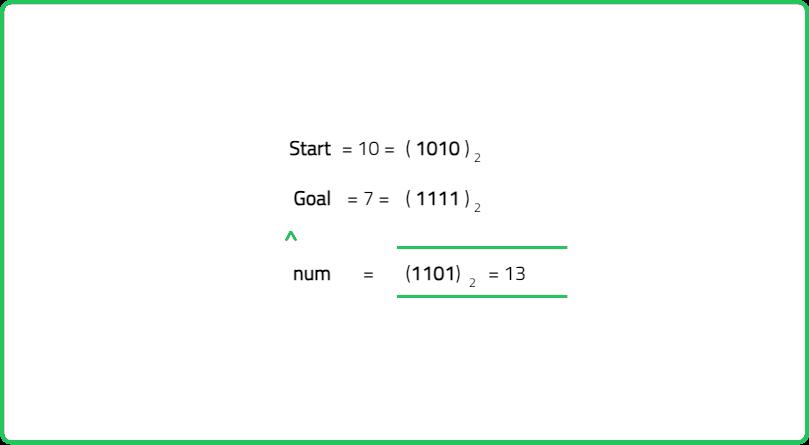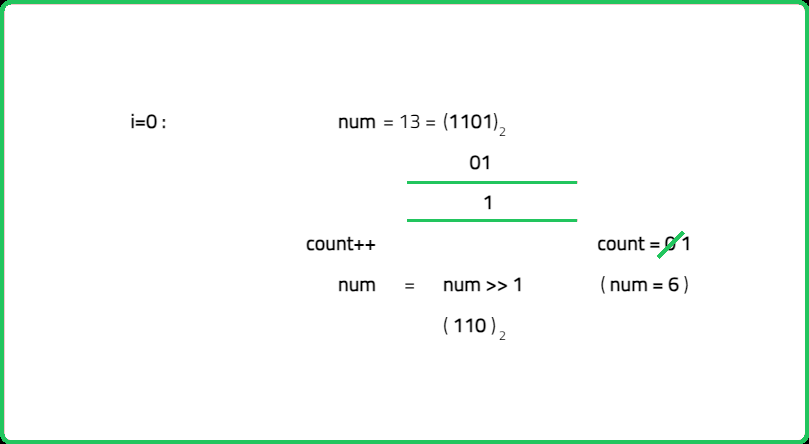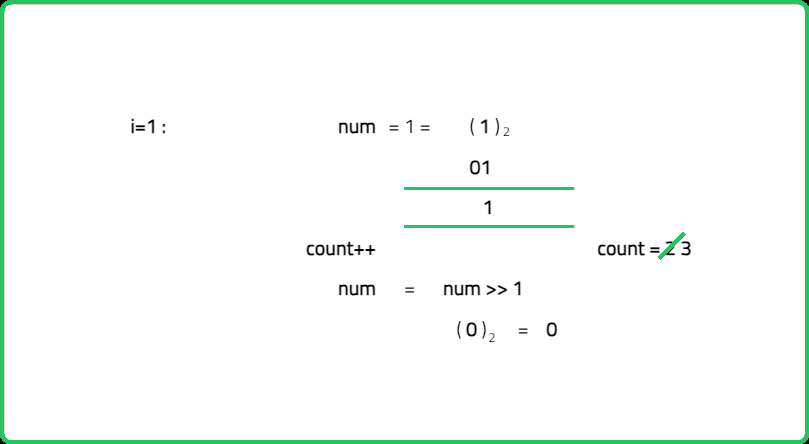Minimum Bit Flips to Convert Number
Bit Manipulation
Problems
Medium
- Fun Fact: The concept underlying this problem is used extensively in error detection and correction during data transmission in networks
- The technique, known as Hamming distance, measures the number of bit flips required to convert one binary string into another - in other words, it helps to understand how similar (or dissimilar) two pieces of data are
- In real-world applications, such as in telecommunications or computer science, it assists in detecting and correcting errors that might occur due to noise or disruption
- Principal applications can be found in information theory, and particularly in coding theory
Given two integers start and goal. Flip the minimum number of bits of start integer to convert it into goal integer.
A bits flip in the number val is to choose any bit in binary representation of val and flipping it from either 0 to 1 or 1 to 0.
Examples:
Input : start = 10 , goal = 7
Output : 3
Explanation : The binary representation of 10 is "1010".
The binary representation of 7 is "111".
If we flip the underlined bits in binary representation of 10 then we will obtain our goal.
Input : start = 3 , goal = 4
Output : 3
Explanation : The binary representation of 3 is "011".
The binary representation of 4 is "100".
So if we flip all the three bits of 3 then we will reach our goal number.
Input : start = 1 , goal = 7
Constraints
- 1 <= start , end <= 109
Hints
- To convert start to goal, XOR the two integers. The result of XOR will have 1s at all the bit positions where start and goal differ.
- "Count the number of 1s in the XOR result. Each 1 corresponds to a bit that needs to be flipped to convert start into goal. This count gives the minimum number of bit flips required. "
Company Tags
Reddit
Ernst & Young
Flipkart
American Express
Byju's
Morgan Stanley
Walmart
Airbnb
Optum
Databricks
Swiggy
Roche
DoorDash
IBM
HCL Technologies
Stripe
NVIDIA
Johnson & Johnson
Zomato
ARM
McKinsey & Company
Twilio
Boston Consulting Group
MongoDB
Electronic Arts
Google
Microsoft
Amazon
Meta
Apple
Netflix
Adobe



